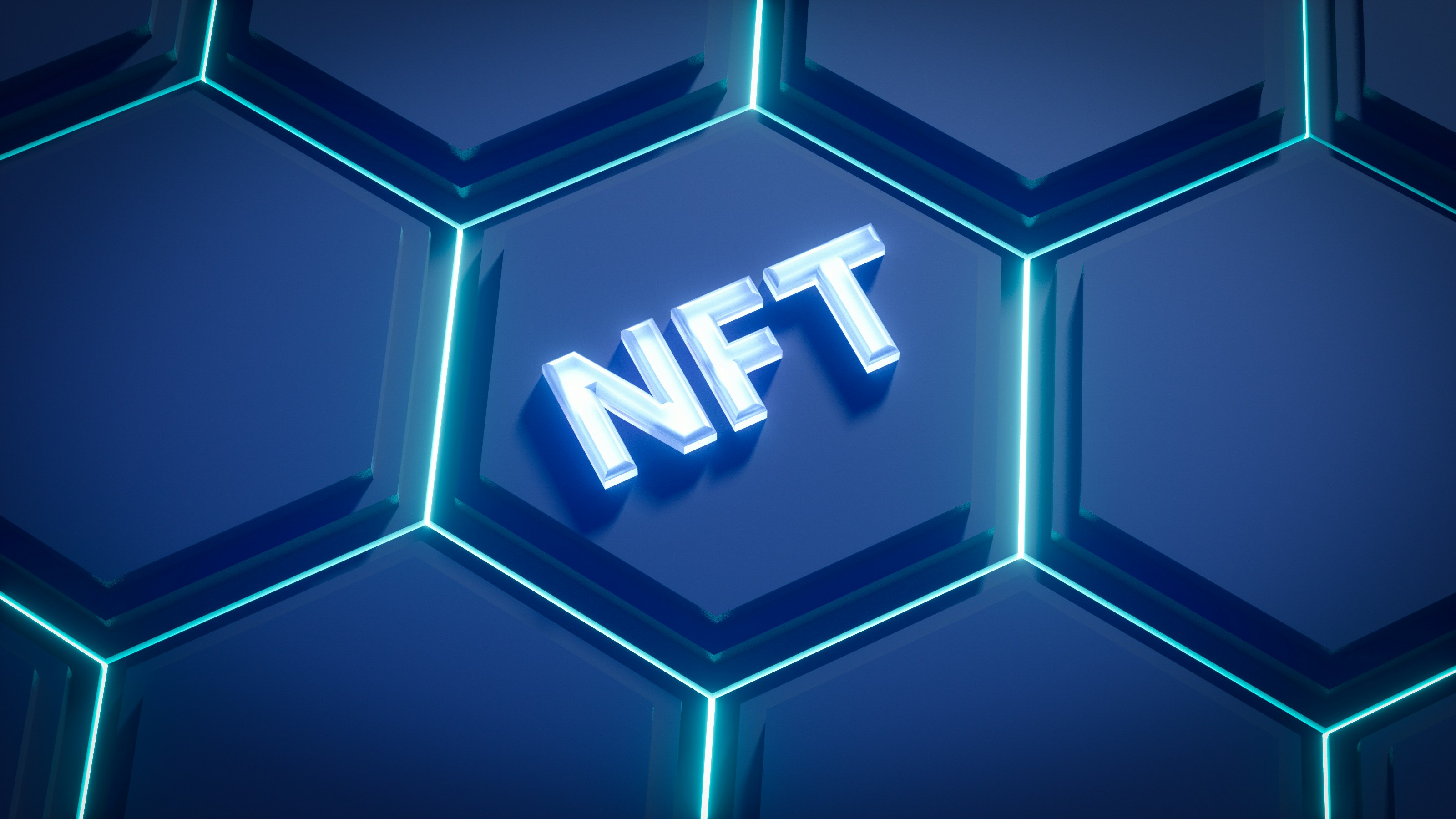Real-World Asset Tokenisation: ERC-3643 vs NFTs For Businesses
08 Apr, 20259 minutes
Real-world asset tokenisation is changing how businesses manage valuable assets, making ownership, trade, and investment more accessible and secure. From real estate to intellectual property, industries are using blockchain to create digital tokens representing these assets. It’s efficient, transparent and opens up opportunities like fractional ownership and streamlined transactions.
But here’s the challenge: selecting the right framework for tokenisation. The two most prominent options, ERC-3643 and NFTs (Non-Fungible Tokens - ERC-721), serve very different purposes. The key is understanding what each framework offers and how they compare to real-world asset tokenisation.
This guide will break it down, clearly contrasting ERC-3643 vs NFTs, explaining the challenges involved, and sharing tips for finding the best fit for your business.
Why Real-World Asset Tokenisation is Booming
Since tokenisation emerged around 2017, adoption was initially limited to assets like stablecoins and NFTs. Fast forward to 2025, and there’s a major shift underway in the Web3 space. Financial institutions and global investors are now turning their attention to real-world asset tokenisation for its potential to transform traditional markets. With experts predicting the sector could reach a valuation of $50 billion by the end of 2025, there is no doubt the industry is booming.
Why now? There are a few key factors driving adoption:
- Economic Opportunities in High-Rate Environments: Tokenised assets are emerging as a hedge against market volatility. High interest rates are improving the economics of certain tokenisation use cases, such as digitising sovereign bonds, money market funds, and repurchase agreements.
- Liquid Access to Liquid Markets: For decades, many real-world assets came with barriers to liquidity and high entry thresholds. Tokenisation eliminates these issues by fractionalising assets and making investments more accessible. You’re no longer limited to trading entire properties or financial instruments. Tokens allow pieces of ownership to move smoothly between buyers and sellers.
- Government and Regulatory Support: Governments in regions like Asia, Switzerland, the UK, and Japan are adjusting regulations to better accommodate tokenisation. Financial powerhouses like JP Morgan and HSBC are already using tokenised assets for settlement, asset management, and client offerings.
- Maturing Expertise: Five years ago, many businesses lacked the specialised teams needed for tokenisation. Now, companies have strengthened their digital asset capabilities, expanding the ecosystem for large-scale adoption of real-world tokens.
With this momentum, real-world asset tokenisation is shaping up to be more than a trend. It’s becoming a standard practice. However, to make it work, businesses must select the right tokenisation framework for their needs.
ERC-3643 vs NFTs for Real-World Asset Tokenization
Tokenisation makes high-value assets like real estate or art easy to fractionalise, enabling more investors to participate. It also removes intermediaries, reduces transaction costs, and brings transparency to ownership records. Plus, blockchain’s security adds extra trust to transactions.
However, not all tokenisation frameworks are equal. Some suit highly regulated industries like finance or logistics, while others thrive in creative or niche areas. And this is where ERC-3643 and NFTs come into play.
ERC-3643 and ERC-721 smart contract may share the same blockchain DNA, but they differ immensely in functionality and purpose. Here’s how they stack up:
ERC-3643
ERC-3643 was designed with compliance and regulation in mind. The Ethereum-based framework excels in environments where keeping investors, regulators, and legal stakeholders on board is crucial.
What makes ERC-3643 special is its built-in compliance features. This includes identity verification, permission management, and traceability.
Essentially, this framework is not just about creating digital tokens. It’s about ensuring those tokens meet strict regulatory requirements for industries like real estate, finance, and logistics. If you’re handling investments or other assets in regulated sectors, ERC-3643 is built to keep your operations above board.
According to research, by 2030, real estate is projected to become the largest category of tokenised assets, accounting for nearly one-third of the total market, highlighting the huge potential of tokenisation.
The key strengths of ERC-3643:
- Onchain Indetity: Only verified users can interact with the token, making it ideal for regulated financial assets and ensuring adherence to KYC/AML requirements.
- Jurisdiction Agnosticity: Allows users to embed and enforce compliance rules regardless of their jurisdiction, enabling seamless cross-border regulatory alignment.
- Embedded Compliance: ERC-3643 integrates compliance mechanisms directly into token operations, ensuring adherence to regulations.
- Credibility & Community: Backed by a growing ecosystem, ERC-3643 is already adopted by key players like Tokeny, Archax, and the Luxembourg Stock Exchange; making it the go-to standard for compliant digital assets.
NFTs (Non-Fungible Tokens)
NFTs made waves for their ability to showcase uniqueness. Focusing on ERC-721s, these tokens are indivisible and represent ownership of unique assets, making them ideal for tokenizing items like art, collectables, or real-world assets tied to a single entity. Unlike ERC-3643, NFTs weren’t explicitly designed with compliance in mind but are exceptional at proving ownership for one-of-a-kind or limited assets.
While NFTs are most famous in areas like digital art or pop-culture collectables, they have broader applications, including tokenising intellectual property or personal memorabilia. They’re ideal if your focus is on expressing singular value rather than managing scalability or regulation.
What NFTs bring to the table:
- Proven Uniqueness: Each ERC-721 token is inherently unique, making it ideal for representing one-of-a-kind assets such as intellectual property, real estate deeds, or digital art.
- Direct Ownership: NFTs offer transparent and verifiable proof of ownership, recorded immutably on the blockchain, reducing reliance on intermediaries.
- Ease of Entry: With fewer compliance barriers, ERC-721 tokens are especially accessible to creators, artists, and industries not bound by strict regulatory frameworks.
- Programmable Utility: Beyond ownership, ERC-721s can be programmed with smart contract features—enabling royalties, licensing rights, or even access control—unlocking new monetization models.
Where They Differ
Understanding the key differences between ERC-3643 and NFTs is essential for choosing the right framework. Here’s how they compare across key factors:
- Compliance Needs: If you’re in real estate or financial services, ERC-3643 delivers assurance through compliance capabilities. NFTs, by contrast, fall short in regulating participant eligibility and transaction transparency.
- Asset Purpose: ERC-3643 suits shared ownership (fractionalised assets) like a property or loan portfolio. Whilst you can fractionalise ERC-721s, NFTs work better for unique, indivisible items with single ownership, such as patents or exclusive merchandise.
- Industry Fit: ERC-3643 serves regulated industries reliant on trust and traceability. NFTs cater to creative sectors or unregulated spaces where uniqueness is prioritised over rules.
Ultimately, your choice of framework will hinge on your business needs, industry standards, and the type of asset being tokenised.

Challenges in Real-World Asset Tokenization
While exciting, tokenisation can get tricky. Businesses exploring ERC-3643 vs NFTs need to understand and address the key challenges involved. Here are the big ones:
1. Regulatory Compliance
For tokenised assets to function in highly regulated industries, they must adhere to strict compliance rules. Regulations around KYC (Know Your Customer) and AML (Anti-Money Laundering) are just the beginning. ERC-3643 simplifies this process by embedding these safeguards into its design. NFTs, on the other hand, don’t offer compliance features natively, which can create hurdles in legally complex environments.
2. Legal and Ownership Clarity
Blockchain offers transparent records, but for tokenised assets to work legally, those digital records must align with enforceable real-world ownership. An NFT or ERC-3643 token alone won’t solve legal disputes unless the governing frameworks are set in stone.
3. Security and Trust
Fraud, hacking, and poorly designed smart contracts can create roadblocks in tokenisation efforts. Organisations need experts in blockchain to implement tokens securely and avoid risky pitfalls.
4. Market Awareness
Tokenisation can be a hard sell to traditional investors unfamiliar with Web3, blockchain, crypto. Simplifying key concepts and ensuring demonstrable value are crucial for adoption.
By tackling these challenges head-on and selecting the right tokenisation framework, businesses can position themselves for success.
Best Practices for Tokenisation Success
Getting started with real-world asset tokenisation? Follow these steps to make sure you’re walking into it well-prepared:
1. Bring in Blockchain Talent
Tokenisation is technical. Partnering with experts through blockchain recruitment ensures you have the best developers and consultants to guide you. A blockchain recruitment agency can also help you scale as you build your tokenisation strategy.
Key roles include:
- Blockchain Developer: Builds the underlying code and smart contracts that power tokenised systems.
- Smart Contract Engineer: Designs and deploys self-executing contracts to enable secure transactions.
- Tokenisation Strategist: Defines tokenomics, structures token sales, and ensures regulatory compliance.
- Security Auditor: Reviews blockchain systems and smart contracts to prevent vulnerabilities.
- Marketing Manager: Drives token adoption, builds community engagement, and manages token launch campaigns.
Finding the right talent in the tokenised market can be challenging, but we make it easy. Whether you need skilled developers, security experts, or a marketing specialist to drive your token launch, our blockchain recruitment services mean we connect you with professionals who have the expertise to bring your project to life.
2. Understand Your Primary Goal
Begin by asking what you want to achieve. If you're securing institutional investors or dealing with legal red tape, ERC-3643 will serve you better by delivering compliance features. If your asset requires uniqueness or is destined for niche creative markets, NFTs make more sense.
3. Analyse Your Asset Type
Categorise your asset. Is it a high-value, divisible asset like a luxury property? Go for ERC-3643. Is it a one-off creation like a piece of music or a piece of memorabilia? NFTs are likely the better fit.
4. Know Your Industry’s Regulatory Space
Conduct due diligence around legal requirements for your industry and jurisdiction. ERC-3643’s design handles legal aspects more seamlessly, making it a safer bet if you’re operating in finance, logistics, or real estate.
5. Educate Stakeholders
Whether it’s board members, regulators, or investors, ensure they understand the benefits of tokenisation. Use real-world examples and highlight how the chosen framework fits the business case.
With these best practices, businesses can avoid pitfalls and make strategic choices tailored to their needs.
The Verdict: ERC-3643 vs NFTs For Businesses
Choosing between ERC-3643 and NFTs is a big decision for any business looking to tap into the benefits of Web3. Each has its strengths. ERC-3643 is perfect for industries that need compliance and flexibility, while NFTs shine when uniqueness and individuality are key. The key is knowing your goals, the type of asset you’re dealing with, and the demands of your industry.
However, tokenisation can be tricky without the right expertise. You’ll need skilled professionals who can handle the technical side, ensure everything meets legal standards, and guide the process smoothly. Blockchain developers, smart contract experts, and tokenisation strategists are just a few of the specialists who can make a big difference. A blockchain recruitment agency that knows this space inside and out can connect you with the talent you need to make your project a success.
Bringing in the right team and leaning on expert advice could save you a lot of time and potential headaches. With the right framework and people in place, your business can confidently take this next step forward in an exciting and growing field.
Looking For Specialised Web3 Talent?
Struggling to find the perfect tokenisation expert for your business? Don’t let the complexities of hiring in this niche overwhelm you. Our specialised blockchain recruitment agency connects you to professionals through broad talent pools and industry-leading insights. We simplify the hiring process so you can focus on achieving your goals with the right experts by your side.
Make your search easier today. Contact us now and access the talent your business needs.



